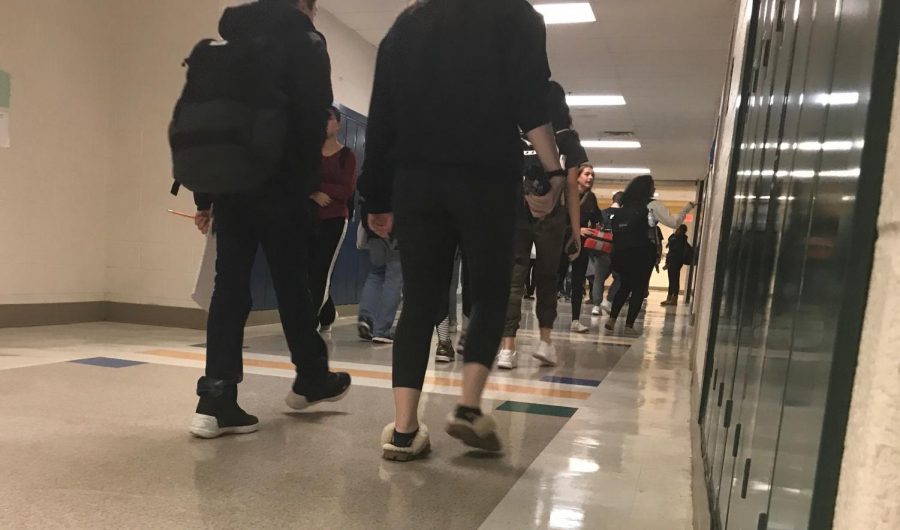CHS administration rings tardy bell on late students
Students head through the hallways to make it to class before the bell rings. Administration is starting to crack down on tardiness.
November 21, 2017
The 7:45 bell, an indication that students should not only be in class, but also be seated, seems to uneffective as students are still wandering the hallways in the morning.
Recently, administrators addressed the fact that students have continuously been arriving later than usual to their classes, especially first period. This ongoing phenomenon of poor attendance has taken a clear toll on the learning and productivity of classrooms throughout CHS.
“Security continues to monitor student tardiness by being visible and present in posted areas during the change of class periods,” security team leader Terry Bell said. “We try to promote on-time attendance by verbally encouraging students to move to their classrooms before the late bell rings.”
The attendance policy of MCPS clearly states that each teacher is responsible for recording the attendance of students in their class. Teachers record this directly through the online attendance system, which maintains a record of the date, time and person entering the data.
“The student tardiness issue begins in the classroom where the teacher is responsible for accurately tracking and reporting tardiness consistently each and every period,” Bell said. “Once this information is collected and assimilated, then the information is forwarded to the next level where accountability should take place.”
Principal Joan Benz has made several announcements to remind teachers that they must mark late students with an unexcused tardy and to remind those students to get to class on time.
In her announcement, Benz reminded students and staff that three unexcused tardies equals an unexcused absence, and that three unexcused absences results in loss of credits for the class.
“I’m out in the halls in the morning [and] lunchtime, ” Benz said. “A few minutes before the last bell, I observe a lot of students in the hallway, and I know that they’re not going to get from point A to B within the time before the next bell rings.”
An additional issue that is brought up is that of classroom disruptions. Prior to this school year, being late to first period required either a red unexcused, or green excused attendance slip. Now, students are to report to their first period regardless, unless their tardiness is excused. Tardinesses are generally excused for religious or medical reasons.
“It absolutely disrupts the flow of the class when students are late,” World and SMAC teacher Evan Rosenthal said. “Often times, teachers like to get started right away, and when students walk in 5, 10, 15 minutes late to class, it not only disrupts what the teacher is teaching and what the students are learning, and the student who comes in late has already missed a large part of instruction for that day.”
Several interviewed students also agree with classroom disruptions caused by students late to class.
“I think that being late to class is rude,” junior John* said. “It disrupts the learning flow in the classroom and causes the teacher and students to be distracted.”
*name was changed for anonymity of the source


